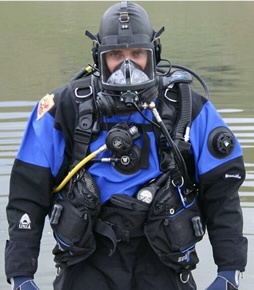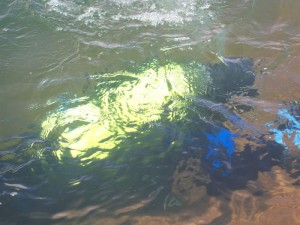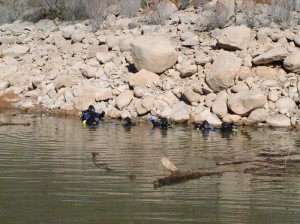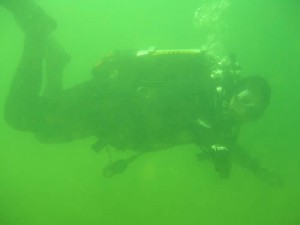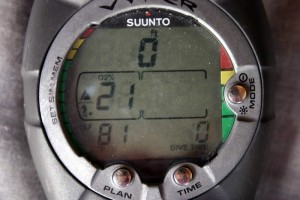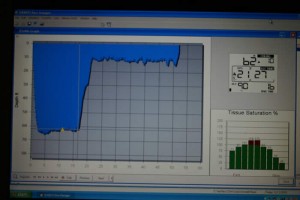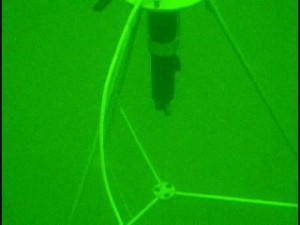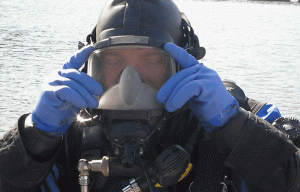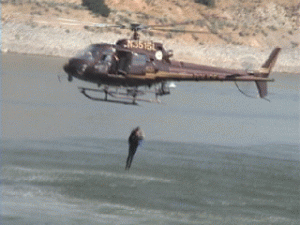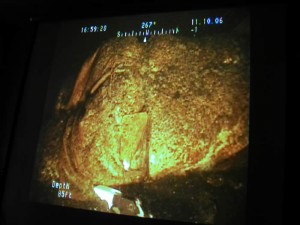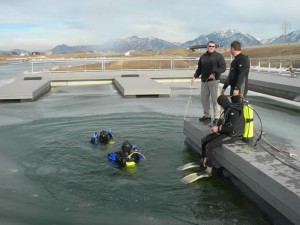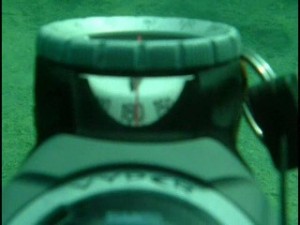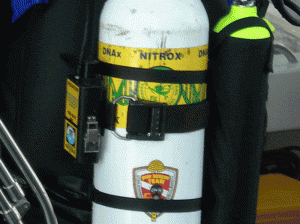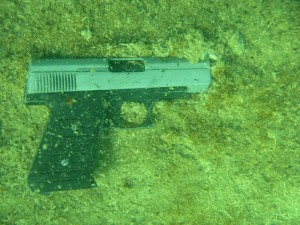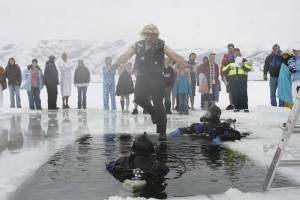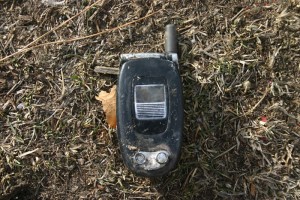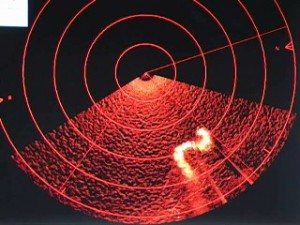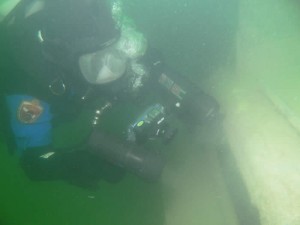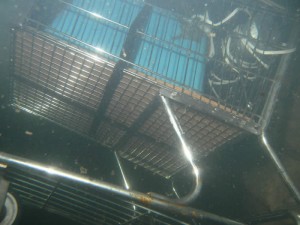Training
Training is a key element to the success of the DPS Dive Team. Multiple Diving Specialties and unique diving skills in the overall skill-sets of the Dive Team members. Below you will see the various Specialties and skills which have been internalized to make each Diver as competent and safe as possible. Team training occurs twice monthly. Supplemental training is conducted on occasion with other Utah Dive Teams. The DPS Dive Team has one Police Diver Instructor and a second in-training. These two officers are also Recreational Diver Instructors. Almost all training received by the DPS Dive Team Divers is conducted in-house.
Equally important, training instills within each Dive Team member a feeling of confidence with each other. The Primary Diver knows that if s/he gets into trouble, the Backup Diver is competently trained to come to the rescue. All Divers know that the surface support personnel are competent to help them if things head south. Lastly, Investigators, Sheriffs, and grieving familes … all know that bona fide experts are doing all they can to bring a successful closure to the situation.
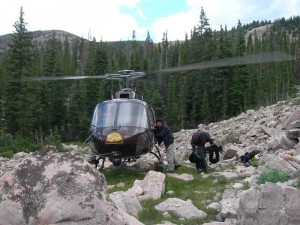
Altitude Diving
This training provides knowledge and skill for DPS Divers to dive at the high altitudes in which most Utah lakes and reservoirs are found.
This training is critical to the safety of the DPS Divers as they deploy in high mountain lakes and reservoirs. A great majority of diving science is calculated at sea level. Diving at higher altitudes requires the application of a theoretical depth chart which has been created using extrapolated data. Some bodies of water in Utah are at such high altitudes, that the DPS Divers need to bo on-site for at least 12 hours before diving, just to give their bodies a chance to acclimate to the thin air.
Underwater Auditing
This training provides knowledge and skill for DPS Divers to conduct audits of underwater landscapes and establish “baselines” for normalcy of that particular location.
This training is critical to the DPS Divers as they deploy in underwater investigations. To have a prior awareness of what the bottom of a lake/reservoir or the face of a dam normally looks like is invaluable when having to go there on a call of possible criminal or terrorist activity. This is one of the most important functions performed by the DPS Dive Team.
This training provides knowledge and skill for DPS Divers to safely dive in waters that have so much particulate that one cannot even see their hand on their mask. This training is critical to the safety of the DPS Divers as they deploy in black water environments. Not only is this type of diving psychologically unsettling, the diver is not able to prevent contact with hazardous objects like tangled barbed wire or treetops. Interestingly, a diver swimming into a treetop is one of the most dangerous things that could happen underwater. The photo at left was taken just before a drowning victim of the St. George floods was found.
Cave Diver Buoyancy Control
This training provides knowledge and skill for DPS Divers to maneuver around, take photographs, take video, and operate within only inches of a soft lake bottom and not create a silt-out.
This training is critical to the safety of the DPS Divers as they deploy in high silt level environments on a regular basis. For example, Deer Creek Reservoir may have 8′ visibility on the bottom … on a good day. If the diver causes a silt-out here, it may negate the possibility of acquiring much-needed photos or video of the investigation site. This level of buoyancy control is one point that sets the DPS Dive Team apart.
Computer Diving
This training provides knowledge and skill for DPS Divers to utilize electronic dive computers as an aid to accomplishing complicated dives as safely as possible, regardless of the environment.
The DPS Dive computers re-calculate the depth, dive time, nitrogen saturation, oxygen exposure, and decompression obligation every 10 seconds. This provides the DPS Divers with the optimal safety precautions against diving in the deepest, darkest, and coldest of Utah lakes.
Decompression Procedures
This training provides knowledge and skill for DPS Divers to decompress their bodies from over-saturation of nitrogen, in order to prevent “The Bends” in complicated dives.
This training is critical to the safety of the DPS Divers as they deploy in complex dives involving decompression obligations. Recreational Divers remain within the “No Decompression Limits” but that is not always possible in DPS Dive Team deployments. To date, the longest deco obligation on an official DPS dive was 21 minutes, but the divers are trained for much longer deco if necessary.
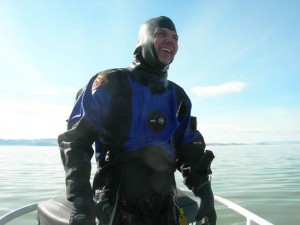
Dry Suit Diving
This training provides knowledge and skill for DPS Divers to employ Dry Suits to encapsulate their bodies from frigid or unclean water.
This training is critical to the safety of the DPS Divers as they deploy in contaminated or frigid waters. For example, the Great Salt Lake often has Brine Shrimp eggs in the water. Getting just one of these tiny eggs in a diver’s eye can cause the “Egg Eye” malady which can even blind the diver. In frigid water, being encapsulated preserves the diver’s body warmth, preventing serious hyperthermia or loss of consciousness.
This training provides knowledge and skill for DPS Divers to deploy to a depth of 150′ on air. Dives of this nature may involve staged decompression and enhanced nitrogen off-gassing via oxygen-enriched breathing gas. Additionally, this training aids the Diver to deal with higher levels of Nitrogen-Narcosis, also known as Rapture of the Deep.
This training is critical to the safety of the DPS Divers as they deploy in very deep reservoirs and lakes.
This training provides knowledge and skill for DPS Divers to utilize full face fasks as a tool to enhance their underwater capabilities.
This training is critical to the safety of the DPS Divers as they deploy in Full Face Masks. The added capabilities of underwater speech and also total encapsulation from the water cause this to be a necessity, rather than a luxury. All DPS dive operations are conducted with a Full Face Mask and voice communications.
This training provides knowledge and skill for DPS Divers to successfully deploy via helicopter insertion in remote areas or in a “Hasty Search.”
This training is critical to the safety of the DPS Divers as they deploy in scenarios involving helicopter insertions. Jumping out of a moving helicopter while in cumbersome SCUBA gear is matter not to be taken lightly. This training begins in a swimming pool, jumping off the high-dive platform, and then moves on to actual helo-cast exercises. The DPS Dive Team employed helicopter insertions while conducting multiple high-altitude lake searches in the Wasatch Mountains, the highest altitude lake being just over 11,000 feet high.
Underwater Homicide Investigation
This training provides knowledge and skill for DPS Divers to perform investigations of homicides in an underwater environment.
This training is critical to the DPS Divers as they deploy in underwater homicide investigations. In the State of Utah, any unattended death must be treated as a homicide until determined to be accidental or natural. The skills employed by a diver in such investigations must be optimal, first, to help establish a cause of death and second, to assist in any criminal/civil litigation that may follow.
This training provides knowledge and skill for DPS Divers to deploy in spite of an ice sheet covering the lake or reservoir.
This training is critical to the safety of the DPS Divers as they deploy in frigid water overhead environments. Diving beneath the ice is, perhaps, the most dangerous kind of diving a Police Diver may encounter. It is so risky that a line is tied to the Diver as a safety precaution. Often there is “only one way in and one way out.” The specific training for DPS Divers encompasses finding the underwater target, documenting it, and recovering it, if necessary.
This training provides knowledge and skill for DPS Divers to utilize a compass to navigate successfully underwater.
This training is critical to the safety of the DPS Diver as they deploy in scenarios wherein they must navigate to a target and back to the entry point with only a compass heading to guide them. This is a common skill among Recreational Divers, but must be refined for Police Diving.
Nitrox & Advanced Nitrox Diving
This training provides knowledge and skill for DPS Divers to utilize oxgen enriched breathing gas (up to 40% oxygen) for general diving and highly enriched gas (up to 100% oxygen) for staged decompression.
This training is critical to the safety of the DPS Divers as they deploy in complex dives that require mixed-gas breathing mixtures. Due to Utah’s unique diving conditions, Nitrox Diving is desirable to offer a safer environment at depths less than 100′. Advanced Nitrox Diving is extremely valuable during decompression, when diving at depths over 100′, as the oxygen-rich Nitrox displaces nitrogen bubbles in the human body, diminsing the risk of “The Bends.” In frigid water, this also gets the Diver out of the water faster, thus lowering the risk of hypothermia.
This training provides knowledge and skill for DPS Divers to take courtroom quality photographs at underwater scenes.
This training is critical to the DPS Divers as they deploy in investigations requiring photography documentation. An underwater scene is very delicate in that even the slightest fin kick or swirl can cause the object of interest to be covered up or somehow obscured by sediment. Often, underwater photography is critical in an investigatin or a litigation. Skilled underwater photography is optimal when a homicide scene or evidence can be documented.
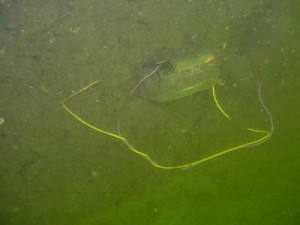 Underwater Post-Blast Investigation
Underwater Post-Blast Investigation
This training provides knowledge and skill for DPS Divers to investigate scenes at which an explosive device has detonated.
This training is critical to the safety of the DPS Divers as they deploy in investigations subsequent to an explosive device that has been detonated. It is critical to such an investigation that the components of the device be evaluated. Yet, the site may be unstable and in disarray. If possible, the Diver must be able to recognize, document, and possibly recover any parts that might be evaluated.
Rescue Diving
This training provides knowledge and skill for DPS Divers to rescue a person from death or serious bodily injury.
This training is critical to the safety of the DPS Divers as they deploy in scenarios wherein they must self-rescue or rescue another person. Along with the more common forms of rescues, DPS Divers also provide on-site protection at “Polar Bear Plunges” as shown to the left, and at the water phase of Triathlons.
Search & Recovery Diving
This training provides knowledge and skill for DPS Divers to search for and recover objects or victims.
This training is critical to the safety of the DPS Divers as they deploy in scenarios involving the search and recovery of objects or victims, whether it is merely a lost watch or a submerged vessel. This is a secondary mission of the Dive Team, but a skillset which is valuable nonetheless. The Dive Team has located numerous such objects like the cell phone seen at left, however, the latest object being a handgun used in a violent felony that was disposed of by throwing it into a lake with zero visibility.
Sonar Guided Diving
This training provides knowledge and skill for DPS Divers to be guided by sonar to an underwater target.
This training is critical to the safety of the DPS Divers as they deploy in dives wherein they must be guided by sonar to a target, whether it be a possible WMD, a drowning victim, or a weapon. This form of diving is stressful, as the Diver usually is in zero visibility water and is totally reliant on the sonar operator for guidance. The photo at left is an actual image of two DPS Divers being guided to a drowned fisherman in 85′ deep black water.
This training provides knowledge and skill for DPS Divers to successfully video underwater scenes.
This training is critical to the DPS Divers as they deploy in investigations wherein videographic documentation is necessary. In cases of attempted terrorism, homicides, or even submerged crashed vehicles, video documentation is extremely valuable. This skill is exceptionally challenging, in that it requires a combination of Cave Diver quality buoyancy, a steady eye for framing the video footage, and an awareness of when more is needed or enough is enough.
Underwater WMD Recognition/Recovery
This training provides knowledge and skill for DPS Divers to respond to underwater Weapons of Mass Destruction in the State of Utah.
This training is critical to the safety of the DPS Divers as they deploy in investigations involving possible Weapons of Mass Destruction. Any object that can create a feeling of terror or an actual hazardous device must be dealt with urgently, yet safely. DPS Divers receive specific training in this area, in order to respond to crises that may arise. Utah’s water is sacrosanct and must be protected by all possible means. The DPS Dive Team works very-very hard to do their part in this critical aspect of counter-terrorism.

